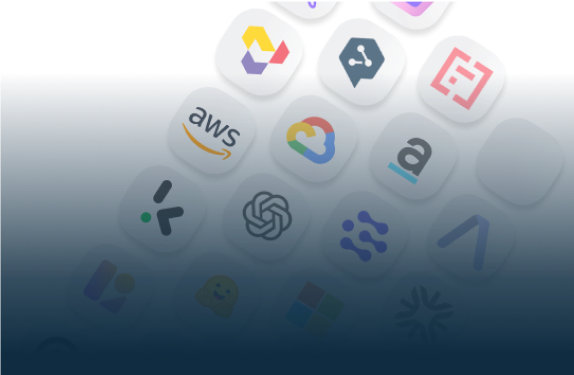
Start Your AI Journey Today
- Access 100+ AI APIs in a single platform.
- Compare and deploy AI models effortlessly.
- Pay-as-you-go with no upfront fees.

Image-to-Image AI is a form of artificial intelligence that alters, transforms, or creates variations based on some original image input. In contrast to text-to-image models, which generate images from prompts in words, these models start with a given image and apply specific transformations, such as style transfers, super-resolution, or image editing.
Some popular image-to-image generative APIs include DALL·E 3 from OpenAI which by default makes things that look more abstract or computer-generated; and Stable Diffusion by Stability AI which makes more photorealistic images.
Business models across the board – whether in marketing or design — today use advanced image-to-image AI and image generators to generate materials that are both high quality while also appealing directly to their target audiences. They are important for applications including product advertisements, social media content, and art. Plus, the ability to create multiple versions of an image while maintaining the integrity of the original concept is essential.
With the growing demand for diversity and visually appealing content, the necessity arises to create sophisticated image-to-image generators to produce these variations efficiently.
When it comes to AI image generation, the challenge lies in creating true and accurate variations of an image without having to compromise the originality of the image and the intent of the user. With the dependence on AI increasing on a large scale, security and safety are also top concerns for users worldwide. Without proper safeguards, the risks associated with AI-driven image generation can outweigh the benefits.
To maintain the trust and efficacy of AI image-generators, tackling these challenges is critical. Strict regulations and implementing a perfected workflow would help ensure that the variations produced align with the ethical standards and the user's expectations and true intentions without compromising on the quality of the image variations.
An ideal system of AI Image-to-Image must address these challenges head-on by providing robust mechanisms for accuracy, content integrity, and user safety. The Image-to-Image AI Workflow tackles these kinds of challenges, as it offers a full solution for the automated development of image variations.
.webp)
By integrating advanced AI technologies that ensure the variations are true to the original image and accurately reflect user intent, Eden AI's system minimizes misinterpretations and preserves the integrity of the content through its Prompt Optimization API. Moreover, it incorporates rigorous content moderation filters to prevent the generation of inappropriate or unsafe content, addressing potential ethical and reputational risks.
%20(1).svg)
This API allows you to obtain precise answers from an image to the questions provided. The API, supported by providers like OpenAI, Google Cloud, and AlephAlpha, allows you to provide a question and evaluate multiple engines to identify the best fit for your specific data needs, ensuring efficient and accurate results.
This API, using providers like OpenAI, Mistral, Replicate, Perplexity AI, Anthropic, Meta AI, Cohere, and Google Cloud, helps to bring out the details of what a user has typed and also optimizes it for clarity; that is, the workflow can easily be understood without much misrepresentation to produce a quality answer.
This API assists in generating the variation of the image based on the initial question provided. Using providers like OpenAI, Replicate, AWS, DeepAI, and StabilityAI, this node creates visual content using AI algorithms, transforming textual descriptions or concepts into images, enabling creative design and visualization in various applications while maintaining the visual integrity and quality of the original.
Eden AI's Image-to-Image Generator Workflow is a powerful, AI-driven image generation solution to create safe and high-quality image variations. Automated and adjustable with features gives businesses and creatives the potential to create diverse visual content that caters to their exact needs.
Eden AI simplifies this process with a pre-built template that consolidates all these AI technologies into a single workflow. Here’s how to get started:
Start by signing up for a free account on Eden AI.
Access the pre-built AI Image-to-Image workflow template directly by clicking here. Save the file to begin customizing it.
Open the template and adjust the parameters to suit your needs. This includes selecting providers, optimizing prompts, setting evaluation criteria, and other specific configurations.
Use Eden AI’s API to integrate the customized workflow into your application. Launch workflow executions and retrieve results programmatically to fit within your existing systems.
.svg)
Utilize the collaboration feature to share your workflow with others. You can manage permissions, allowing team members to view or edit the workflow as needed.
.svg)
As the digital landscape continues to evolve, the role of Image-to-Image AI in driving visual creativity and efficiency cannot be overstated. By addressing challenges such as accuracy, safety, and content integrity, advanced workflows like Eden AI's Image-to-Image Generator provide a comprehensive solution that meets the diverse needs of businesses and creators alike.
With the ability to generate high-quality, contextually relevant image variations, this technology not only enhances visual storytelling but also ensures that content remains engaging and appropriate for various audiences. As we look to the future, the integration of AI-driven tools will undoubtedly shape the next wave of innovation in visual content creation.


You can start building right away. If you have any questions, feel free to chat with us!
Get startedContact sales
